Plain White Loaf
Plain White Loaf
to your Favourites...
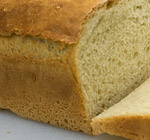
This is a simple loaf and that needs little attention but will produce a lot of love. Because the dough is rather wet it can be difficult to handle, which makes this recipe very easy, because you don’t need to handle it very much.
Ingredients
- 500g strong white flour
- 10g dried yeast (we recommend Doves Farm Quick Yeast)
- 10g salt
- 400ml warm water
Preparation Time: 1 hour 40 minutes
Cooking Time: 40 – 50 minutes
Serves: 1 large loaf
Method
- Put all of the ingredients, except for the water, in to a large mixing bowl. (If your yeast needs activating in water, follow the instructions on the packet and subtract whatever water you need to use from the 400ml water listed above. Then add it with the rest of the water in stage 2.)
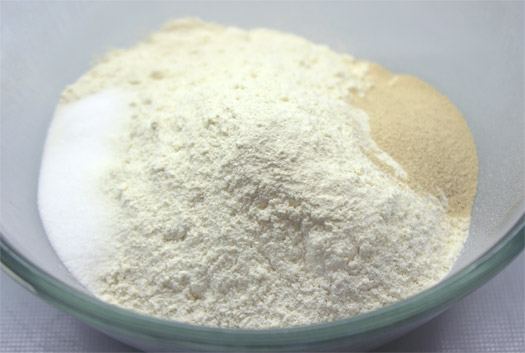
- Mix the dry ingredients together until they are thoroughly distributed, then pour in the water and mix it until the mixture has roughly come together. Don’t worry about any lumps.
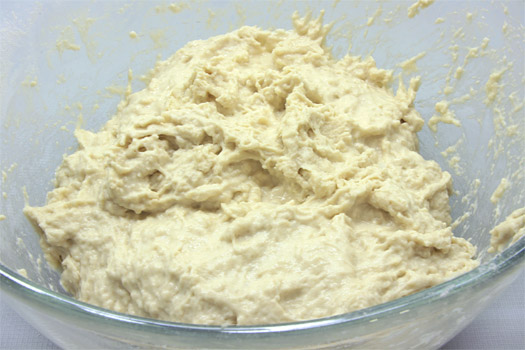
- Cover the bowl with cling-film/plastic-wrap and put into a warm environment for 15 minutes.
- After 15 minutes, pour the dough out of bowl onto a floured work-surface and knead it for about 30 seconds, until it has a uniform texture and becomes smooth. Then put it back into the bowl.
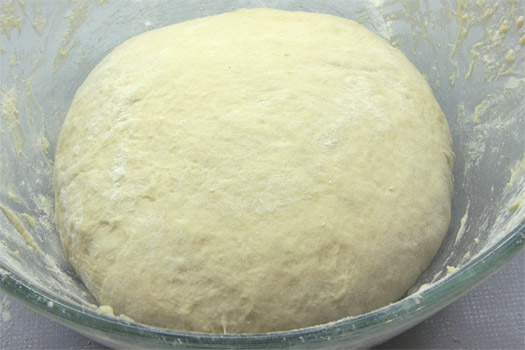
- Cover the bowl with cling-film/plastic-wrap and put it back into the warm environment for another 15 minutes.
- Again, pour the dough out onto a floured work-surface and knead it for 30 seconds, it should be smooth, soft and elastic. Shape the dough into a flattened sausage and put it into an oiled loaf tin.

- Leave the dough uncovered at room temperature and allow it to prove for about 1 hour or until it has doubled in size (the time it takes will vary depending on how warm your room temperature is; the warmer it is, the quicker it will rise).
- While the dough is rising, heat your oven on conventional (not fan assisted) to 250°c and put a baking tray at the bottom of the oven.
- When the dough has doubled in size, fill a cup with about 250ml of water. You can at this point spray it liberally with water (this will give the crust a glossy sheen) or dust it with a little flour (to give it a rustic appearance) or do nothing to it at all.
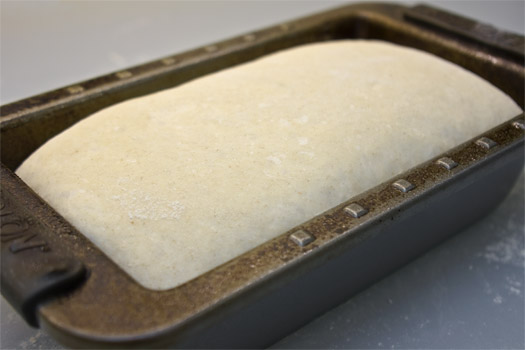
- Put the loaf tin in to the middle of the oven. Then quickly pour the 250ml of water into the baking tray at the bottom of the oven and close the oven door as quickly as you can without slamming it. You may need to temporarily hold the oven door shut as the water in the bottom turns almost instantly into steam (which increases the pressure in the oven). This process helps to create a good crust on the loaf.
- Bake the loaf at 250°c for 10 minutes.
- After 10 minutes, turn the oven down to 190°c and bake it for a further 25 - 35 minutes.
- When the loaf is done, remove it from the oven, transfer it to a cooling rack and allow it to cool to room temperature. To check that the loaf has cooked properly, turn it upside-down and tap the bottom, it should sound hollow. The loaf must be completely cooled before you cut into it otherwise it will still feel doughy.
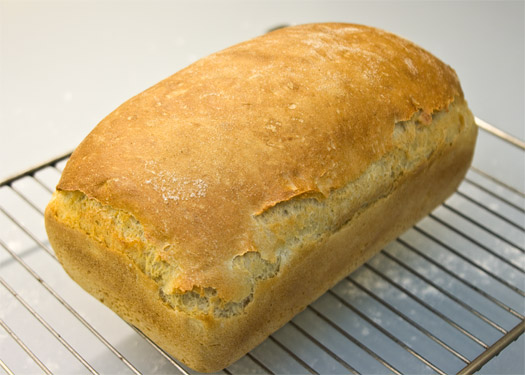
- When it has cooled, either slice it thinly for dainty sandwiches or tear into it and devour with plenty of good butter.
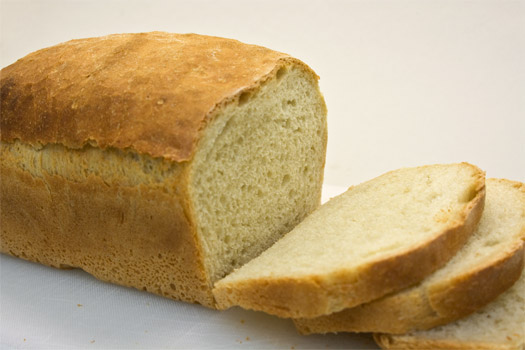
Useful Information
Can it be frozen? Yes.
Can it be prepared in advance? Yes, it can be finished up to 2 days in advance.
Will leftovers be nice? Yes, for up to 2 days.
Notes
- Alternatively, for a very rustic looking loaf, put the kneaded dough onto an oiled baking tray instead of into a loaf tin. This will produce a round, flatter loaf that is practically useless for sandwiches but very good for everything else.
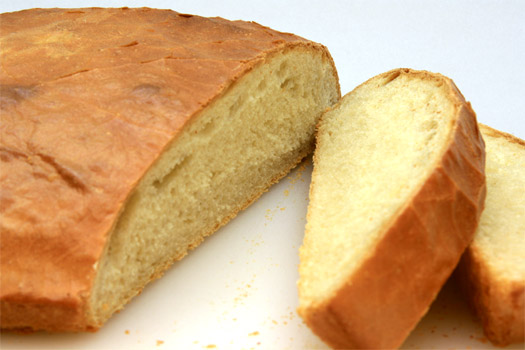
Sponsored Links

Recipe Options


Units of Measurement